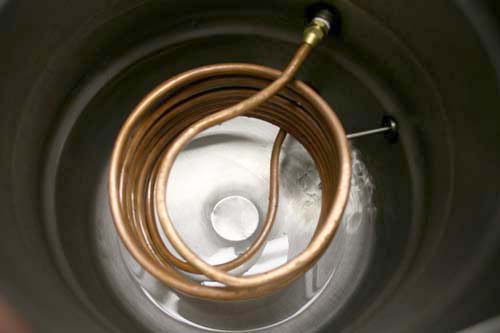Been doing a lot of research lately on building an electric HERMS setup, but the one thing I'm not sure I "get" is where the mash temp probe should go. It seems to be that the commonly accepted locations are the HLT itself and at the point at which the wort re-enters the MLT from the coil (am I right to think this is generally accomplished with a T-fitting?)
What I can't get my head around is why the MLT probe isn't in the main vessel itself. Is there not a significant temperature difference between the wort as it exits the coil and when it it is finished running through the fittings/tubing/return system and is sitting back in the main liquid volume?
It seems to me that putting the probe in the MLT itself would possibly cause the HLT to heat up more than it would in the "typical" situation, as it would be trying to heat the entire volume of the MLT based on the feedback from the probe; this would likely mean a significant higher temperature of returning wort as it leaves the coil.
I've also thought that you could run TWO probes -- coil exit and MLT main -- and "average" them using logic in BCS; "splitting the difference," as it were.
Does anyone have some insight for a very confused HERMS newbie?
What I can't get my head around is why the MLT probe isn't in the main vessel itself. Is there not a significant temperature difference between the wort as it exits the coil and when it it is finished running through the fittings/tubing/return system and is sitting back in the main liquid volume?
It seems to me that putting the probe in the MLT itself would possibly cause the HLT to heat up more than it would in the "typical" situation, as it would be trying to heat the entire volume of the MLT based on the feedback from the probe; this would likely mean a significant higher temperature of returning wort as it leaves the coil.
I've also thought that you could run TWO probes -- coil exit and MLT main -- and "average" them using logic in BCS; "splitting the difference," as it were.
Does anyone have some insight for a very confused HERMS newbie?







